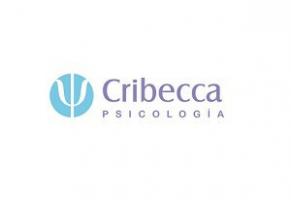Refractory epilepsy: symptoms, causes and treatment
Epilepsy is one of the most common nervous system disorders along with headaches. This problem involves having seizures whose origin is in a malfunction of the brain.
Depending on the age at which it appears and the number of epileptic seizures suffered, this disorder can seriously make it difficult to lead a normal and full life.
Sometimes, despite correctly following several treatments, the patient with epilepsy does not improve. This type of epilepsy is called refractory, and in this article we will address it, along with its causes, symptoms and alternative treatments.
- Related article: "Epilepsy: definition, causes, diagnosis and treatment"
What is refractory epilepsy?
We say that a person suffers from refractory epilepsy when epileptic seizures occur very frequently and, after applying appropriate treatment, no improvements are being obtained. This fact seriously prevents leading a normal life, such as having healthy and full social interactions or the develop autonomy, because it is not known when the next crisis will occur and on top of that there is no type of control about her.
To determine that a person has epilepsy three criteria are taken into account, which allow defining the degree of refractoriness or resistance of the disorder to treatment. Let's see what they are.
1. Biological refractoriness
Refers to lthe biological characteristics of the person that prevent the treatment from being effective. These characteristics cannot be modified directly, and usually imply that surgical treatment has to be resorted to.
Some predictors that indicate that you could suffer from epilepsy that is difficult to treat are:
- First seizures before 2 years of age.
- Massive spasms
- Abnormal EEG.
- Signs of intellectual disability.
- Delayed cognitive development.
- Abnormal physical exam.
- Deformities in the hippocampus and in the cerebral cortex.
2. Pharmacological refractoriness
It implies that, despite the use of appropriate drugs for the treatment of epilepsy, no improvement is achieved.
Before considering epilepsy to be drug resistant it is important to assess whether the dose has been administered necessary of the medicine, at least three different anticonvulsants have been used or the combination of them has been appropriate.
It should also be monitored that the patient takes the medication or does not suffer from any intestinal disorder that prevents full absorption of the drug. Sometimes it can be diagnosed as refractory epilepsy to a nutritional problem.
Once it has been determined that the pharmacological treatment has been adequately administered but that the patient shows no improvement, it is indicated that there is a high degree of resistance to this type of treatment.
3. Psychological and social refractoriness
Epileptic seizures interfere with the lives of patients. Having seizures too frequently prevents you from being able to carry out day-to-day tasks and maintain satisfactory social relationships.
This criterion is taken into account, and epilepsy is considered refractory when seizures occur every week, despite going to therapy.
- You may be interested: "Types of seizures: why do they occur and what causes them?"
Symptoms
As in all epilepsies, the main symptom is having epileptic seizures. Seizures can occur in different ways and last from seconds to minutes. During these crises, the person does not have the ability to stop voluntarily, he can hurt himself and even hurt others accidentally.
In addition to this, other symptoms that can occur are:
- Loss of consciousness
- Loss of sphincter control.
- Look into the void.
- Falling to the ground suddenly.
- Stiffen
- To bite your tongue.
Causes of this type of epilepsy
The causes behind refractory epilepsy are several, and they range from medical problems to bad habits of the patient. Among factors that influence the development of this type of epilepsy are:
- Cerebrovascular disease
- Brain tumors.
- Maintained stress.
- Unhappiness at home.
- Emotional problems.
- Personality problems.
- Brain injuries.
- Neurodegenerative diseases.
- Generalized epileptic syndromes.
- Poor adherence to drug treatment.
- Erratic lifestyle: drug use, irregular sleep schedules ...
Treatment
These are the different forms of treatment for refractory epilepsy.
1. Pharmacological
Usually, the first option to treat epilepsies is the administration of drugs. The most used are:
- Gabapentin.
- Lamotrigine.
- Cannabidiol.
- Levetiracetam.
- Oxcarbazepine.
- Topiramate.
- Zonisamide.
- Tiagabine.
Yes after trying several drugs and adjusting the doses, no improvement is achieved, surgery should be taken as an option.
2. Surgical
Surgery is resorted to when it is considered that the pharmacological treatment is not being effective, despite being used correctly.
Surgical interventions in epilepsy involve removing the area of the brain that is the source of seizures.
3. Diet
Another option used during treatment is following a ketogenic diet. This type of diet is characterized by having foods with a large amount of fat and protein and avoiding the consumption of carbohydrates.
It has been related to the improvement of epileptic symptoms, although in patients with this type of neurological problems the supervision of a professional is necessary.
4. Electrostimulation
Electrical stimulation or electrostimulation is a technology used to treat neurological problems. With this technique the nerves are stimulated directly, sending electrical signals to the defective area. Some methods used:
1. Cortical stimulation
Electrodes are placed over certain parts of the brain and very soft signals are sent.
2. Vagus nerve stimulation
A device is placed that sends a signal to the vagus nerve. decreasing the frequency and quantity of seizures.
3. Deep brain stimulation
Electrodes are placed on affected areas and signals are sent to prevent abnormal activity.
4. Closed loop stimulation
An appliance is placed inside the skull, which detects when there is activity typical of a seizure and produces a current that can prevent a crisis.
Bibliographic references:
- Carrizosa-Moog, J. and Cornejo-Ochoa, William. (2003). What is refractory epilepsy? Iatreia, 16 (2), 163-167.
- Bender del Busto, Juan E.. (2007). REFRACTORY EPILEPSY. Habanera Magazine of Medical Sciences, 6 (1) Retrieved on July 30, 2019, from http://scielo.sld.cu/scielo.php? script = sci_arttext & pid = S1729-519X2007000100010 & lng = es & tlng = es.
- Reyes-Botero, G. and Santiago-Uribe, C. (2010) Refractory epilepsy. Acta Neurológica Colombiana, 26 (2), 34 - 46.


